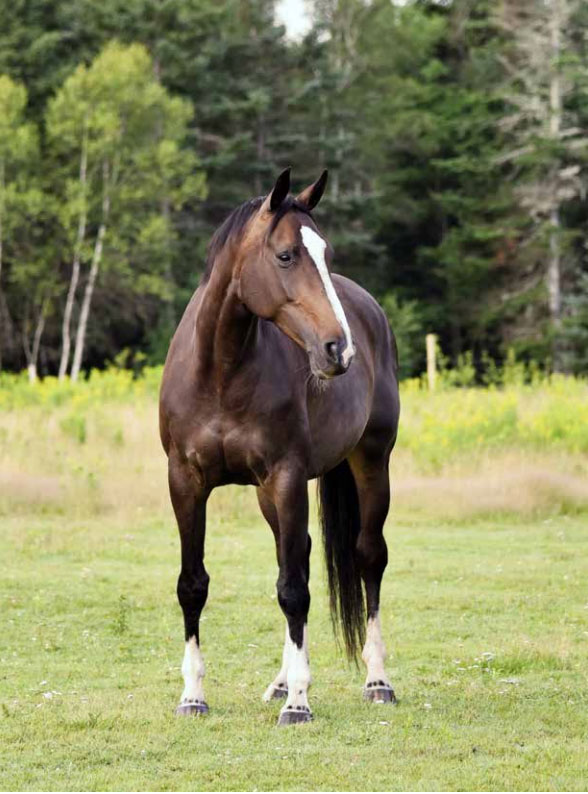Feeding Beet Pulp to Horses

Beet pulp is the fibrous material that remains after most of the sugar is removed from sugar beets. After processing it has high water content and is prone to mould, so it is dried for storage. Dried beet pulp is available in shredded or pelleted form. It is fed as a digestible fibre supplement for a horse’s fibre or forage needs, and dried beet pulp may be incorporated into horse feeds as a source of digestible fibre and to significantly lower the sugar and starch content of the feed. Beet pulp is an excellent ingredient for complete horse feeds, where no hay or a limited amount of hay or pasture is fed, such as feeds for older horses or horses with respiratory problems such as heaves.
Beet pulp is an excellent source of digestible fibre and has a crude protein content of 7%. Beet pulp has a high level of calcium (over 1%) and very little phosphorus. The digestible energy content of beet pulp is greater than hay and less than most grain ingredients.
You may consider feeding beet pulp if your horse is a “hard keeper” to increase weight gain, if the quality of your hay is poor, or if your horse has problems chewing or digesting baled hay, which is especially common in older horses. Because of beet pulp’s high calcium content, you don’t want to feed beet pulp to miniature horses due to the increased risk of enteroliths (intestinal stone formation), or to horses diagnosed with kidney disease or renal calculi.
Horses have been fed beet pulp-based feeds for many years with no problems. Horses on beet pulp-based feeds have suffered no higher incidence of colic.
You must properly soak beet pulp. Place it in a bucket or other container and add two times more water than beet pulp by volume. Warm or cold water may be used; using warm water will decrease the soaking time. Allow the beet pulp to soak for at least 30 minutes before feeding if using warm water, and 60 minutes if using cold water.
Draining or rinsing the excess water from beet pulp after soaking it for at least 30 minutes before feeding will significantly reduce the amount of sugar. If you have a horse with insulin resistance, rinsing the beet pulp is especially important to reduce the sugar content as the lower sugar content from the rinsed beet pulp will reduce glycemic response.
Beet Pulp has high calcium and low phosphorus levels, feeding too much could imbalance the calcium to phosphorus ratio in the diet, which could interfere with normal bone development in young horses. In addition, excessive dietary calcium can increase the risk of renal calculi (kidney stones) in older horses or enteroliths (intestinal stones) in horses of any age.
Some guidelines to follow when adding beet pulp to supplement the regular feeding program (meaning that the horse is already receiving at least 0.5% of its body weight daily of a fortified horse feed) are:
- feed no more than 0.9kg (by dry weight) daily to a pony or growing horse less than one year of age,
- feed no more than 1.8kgs (by dry weight) daily to an immature horse from 1 to 3 years of age, and
- feed no more than 2.72kg (by dry weight) to a mature horse (BW 544kg).
These guidelines will insure that dietary calcium to phosphorus ratios of 1.5:1 to a maximum tolerable level of 3:1 are maintained.
Beet pulp should be soaked before feeding and only enough should be soaked ahead of time for a single feeding. Limit the amount of beet pulp fed due to its high calcium content, to avoid developmental problems in young horses, enteroliths in mature horses and renal calculi in older horses.
Consider a beet pulp-based feed if you want to add beet pulp to your horse’s diet, but don’t want the added labour or to provide a feed low in sugar and starch that is properly balanced. Purina’s Evolution Line, Trimax and XCEL HD are great considerations.
